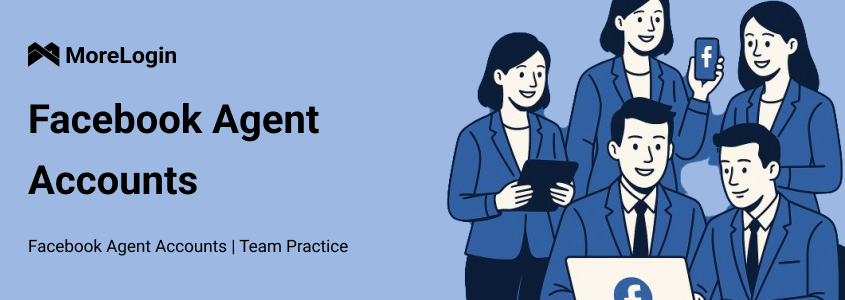
- Product

- Pricing
- Affiliate Program
- Use Cases
- Resource


The Facebook ad account market has become increasingly unstable — frequent bans, moderation issues, and a drop in quality for certain types of accounts. Below is the experience of a team that systematically tests different setups, tracks patterns, and adapts their workflows to algorithm changes.
A few years ago, most bans targeted farmed accounts, while agency accounts were considered relatively untouchable. But now, even agent sellers are facing cleanups. The latest wave affected Hong Kong-based accounts with credit lines, while US and European accounts were largely unaffected.
Avoid launching new campaigns or modifying working funnels during ban waves.
Instant ban probability for new accounts during such times can reach 80–90%.
It’s best to wait 2–5 days until the algorithms stabilize.
Mass rejections — all creatives get rejected.
👉 Action: delete rejected ads, pause traffic for 1–2 weeks. This often helps “revive” the account.
No traction — high CPL and poor performance despite using proven funnels.
👉 Action: either replace the account, warm it up further, or apply aggressive spending to trigger performance.
The team uses both their own and agency accounts, allocating them to key regions like the US, Canada, and European countries.
This geo-targeted strategy allows for better optimization based on local ad policies, higher CTRs, and more stable performance.
Accounts tied to Hong Kong credit cards are not used in core campaigns due to instability and ban risk.
However, they are valuable for small-budget testing, reducing risk of major losses.
Choosing the right proxy is crucial — it must match the region of the ad account:
US accounts → US IPs
Canada accounts → Canadian IPs
European accounts → IPs from that specific country
Using mismatched proxies often triggers ad platform fraud detection.
The best results come from dedicated mobile or residential IPs with no spam history. These minimize bans and improve stability.
On the other hand, cheap or random proxies (especially reused by others) greatly reduce account lifespan. They're often blacklisted and flagged by ad networks, increasing the risk of bans, freezes, and workflow disruptions.
Every account goes through a warm-up phase with a $5–20 daily budget, running white-hat ads on owned websites. Fan page post boosting is not used — it's outdated.
After warming up, two launch strategies are used:
Cautious (safe) — launch 1–2 campaigns, scale slowly.
Aggressive — launch 10–15 campaigns immediately to quickly find working funnels. Requires constant monitoring and spare accounts.
Appeals are rarely used.
Rejections are deleted immediately to avoid escalation.
If rejections continue, the team reviews the creatives, ad copy, and landing pages for moderation triggers.
They also use creative and landing page variations to bypass filters. Additionally, the team relies on anti-detect browsers like MoreLogin to separate sessions, prevent digital fingerprint overlaps, and reduce chances of linking rejected campaigns to fresh accounts.
If bans occur too frequently, the account is replaced.

When an ad account isn’t performing and known funnels aren’t converting, it’s time to evaluate. There are three primary strategies, each with its own pros and risks.
The fastest option — best used when the account may already be under hidden restrictions or shadow bans. Continuing to spend on such accounts often just wastes budget and time.
If there are no obvious issues, give the algorithm more time to learn. Sometimes strong results come only after 1–6 weeks, especially with a gentle, gradual approach using small daily spends.
Best for teams with confidence in their offer, creative, and target audience — and patience to gather long-term data.
This involves pushing $10,000–20,000+ in a short period on already-tested funnels to feed the algorithm fast and force optimization.
This can lead to explosive results, but it's high risk — if the funnel flops, the losses will be significant.
The best approach depends on:
The status of your account pool
Availability of backup accounts
Trust level of the algorithm with your assets
For example, you might start with soft warm-up, then scale budget once performance improves. If there’s no traction, switch accounts.
Do not launch new campaigns during ban waves. Let the storm pass.
Proxies must match account GEO to avoid red flags.
Warm-up is essential for account survival.
Delete rejections rather than appeal to minimize risk.
Continuously test different account types to avoid overreliance on one source.
This methodical, flexible strategy helps teams stay resilient even in unstable advertising environments.